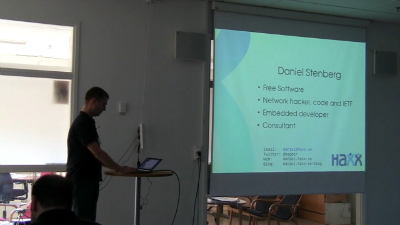During the IETF 75 meeting in Stockholm, there was this multipath tcp BOF (“start-up meeting” sort of) on Thursday morning that I visited.
Multipath TCP (shortened to MPTCP at times) is basically an idea to make everything look like TCP for both end points, but allow for additional TCP paths to get added and allow packets to get routed over any of the added flows to overcome congestion and to select the routes where it flows “best”. The socket API would remain unmodified in both ends. The individual TCP paths would all look and work like regular TCP streams for the rest of the network. It is basically a way to introduce these new fancy features without breaking compatibility. Of course a big point of that is to keep functionality over NATs or other middle-boxes. (See full description.)
The guys holding the BOF had already presented a fairly detailed draft how it could be designed both one-ended and with multiple adresses, but could also boast with an already written implementation that was even demoed live in front of the audience.
The term ‘path’ is basically used for a pair of address+port sets. I would personally rather call it “flow” or “stream” or something, as we cannot really control that the paths are separate from each other as those are entirely in the hands of those who route the IP packets to the destination.
They stressed that their goals here included:
- perform no worse than TCP would on the best of the single TCP paths
- be no harder on the network than a single TCP flow would be, not even for single bottlenecks (network and bottleneck fairness)
- allow resource pooling over multiple TCP paths
A perfect use-case for this is hosts with multiple interfaces. Like a mobile phone with 3G and wifi, as it could have a single TCP connection using paths over both interfaces, and it could even change paths along the way when you move to handover to new wifi access-points or when you plug in your Ethernet cable or whatever. Kind of like a solution to the mobile ip concept with roaming that was never made to actually work in the past.
The multipath tcp mailinglist is already quite active, and it didn’t take long until possible flaws in the backwards compatibility have been discovered and are being discussed. Like if you use TCP to verify that a particular link is alive, MPTCP may in fact break that as the proposal is currently written.
What struck me as an interesting side-effect of this concept, is that if implemented it will separate packets from the same original stream further from each other and possibly make snooping on plain-text TCP traffic harder. Like in the case where you monitor traffic going through a router or similar.

